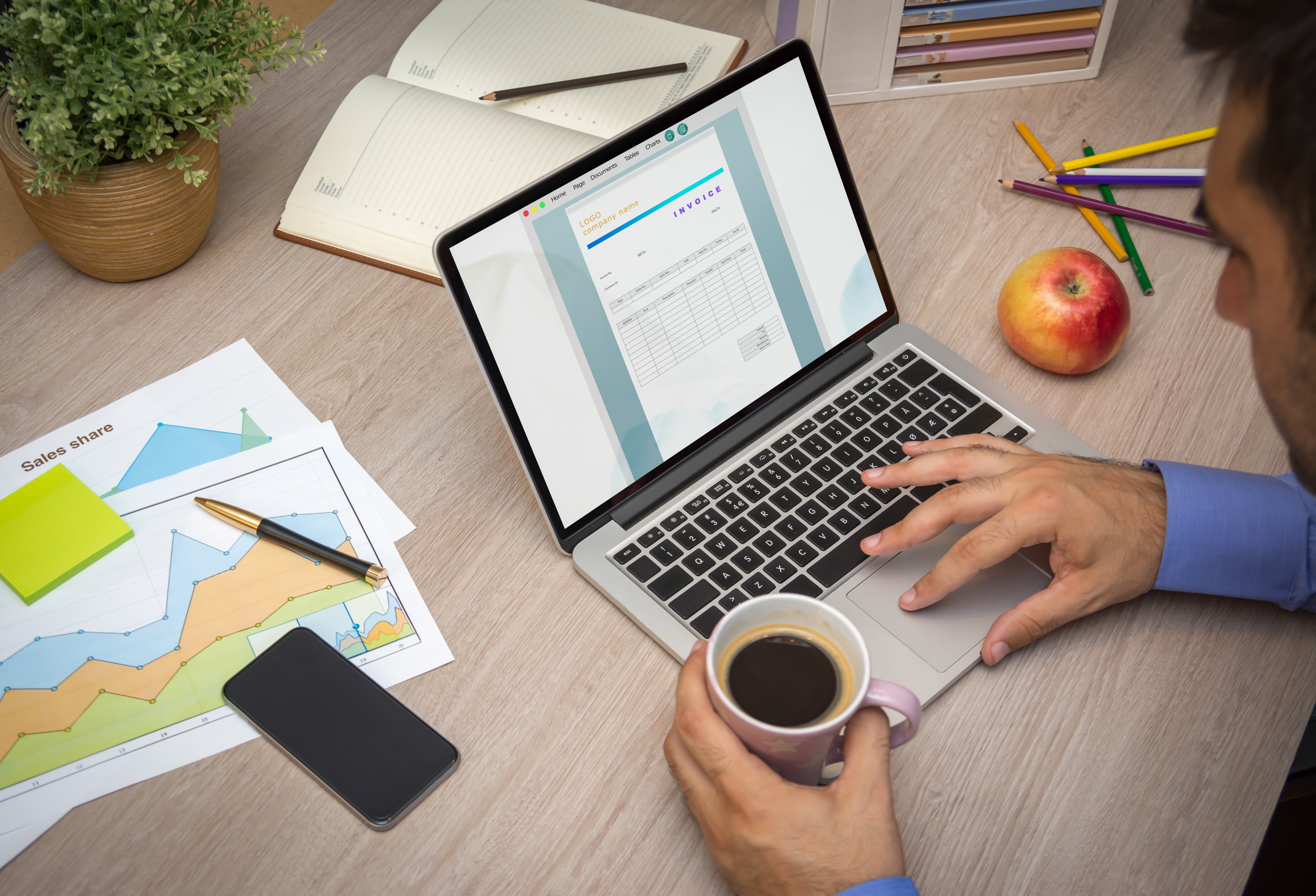Debt collection software (aka accounts receivable management ARM)
In the past, managing debt collections was often a full-time job for an employee dedicated to the complex and time-consuming task of tracking overdue payments. Typically, this person was part of a larger accounts receivable team, and without them actively following up with customers, businesses could face significant cash flow problems. The process of chasing unpaid invoices could strain resources, particularly for companies with a high volume of overdue accounts.
Fortunately, technology has stepped in to streamline this process, and debt collection software now provides efficient solutions for businesses of all sizes. These tools help automate various collection tasks, including recording call logs, tracking KPIs, managing debt disputes, and even offering client credit reports. Most importantly, they allow for seamless payment processing, ensuring that you can manage overdue accounts with minimal manual intervention. Many software options also integrate with existing accounting platforms, offering a smooth workflow across the business.
Moreover, these tools not only save time but can improve collection rates by providing detailed insights into client payment behaviors and automating follow-ups. The right software can help companies take a more proactive approach to collections, reducing human error and ensuring that overdue debts are addressed quickly and efficiently. Though there are costs involved, the investment in debt collection software often leads to improved cash flow, making it a worthwhile consideration for businesses looking to optimize their accounts receivable processes.
Why should my business use debt collection software?
Unless every one of your customers pays in full as soon as they receive an invoice from you, you need a process for tracking how much is owed, recording each payment and partial payment as it’s received, providing interactive payment reminders to your customers, and escalating as needed when payments are overdue.
Back in 2020, when the pandemic was just beginning to leave its mark on small businesses, it was determined that over half of payments owed to small businesses were late in being paid. That doesn’t mean that almost half of businesses received their payments. That means over half of all payments. And we know that many businesses have faced even more challenges collecting payments since then.
Around the world, late payments to SMBs cost trillions of dollars annually. Companies who don’t receive timely payments often can’t meet their own financial obligations, creating a chain reaction across industries. And late payments mean fewer resources for meeting operating expenses and expanding your business.
Collection software doesn’t just send out late notices for your business. It gives you an up-to-date picture of all the invoices you are waiting on full payment for, how late those payments are, adds in late fees and interest charges, and tracks communications between you and your customers. Many also automate invoicing, offer credit checking, and provide payment portals to receive payments electronically.
For every B2B company, working capital is crucial to operations. You manage your working capital through accounts receivable, accounts payable, and/or your inventory. That’s it. And, of course, when your receivables come in late, you will probably have to delay your own payables or your ability to invest in inventory. It all creates a domino effect that can keep small business owners up at night. For businesses that are light on inventory (such as service-oriented businesses), accounts receivable becomes an even higher proportion of impact on working capital.
Debt collections software forces you to create clear credit policies and follow through with them for every client. This alone will likely improve your receivables situation. Then there’s the payment portal that collections software offers. When your customers have options to make payments easily and quickly, they’ll be more compliant.
Finally, the ability to consistently remind your customers of late payments and follow up with them on amounts owed improves your collection process and workflow. When this is automated, you’re not paying high staffing costs just to keep on top of your late payments.
Can I just send overdue invoices to a collection agency?
Yes, you can send any late invoices to a collection agency. But there are two compelling reasons not to do this.
First, collection agencies will charge up to 50% of the amount owing as a fee for debt recovery services. For many businesses, that’s all their profit (and then some) taken up right from the start.
Second, sending a late invoice to a collection agency is likely to harm your relationship with your customer. You have no control over the tactics a collection agency will take to collect a debt. Some debt collectors are known for being extremely aggressive, and this will feed back to you as the business who initially conducted the transaction.
Common credit collection activities by agencies include utilizing call centers, auto dialers, and dialing apps, sending intrusive messages via sms, hiding source phone numbers, and undertaking any collection operations they determine are useful in meeting their goals. These actions do not ingratiate you to your customers—regardless of bad debt.
After everything you’ve invested into gaining each customer, harming or losing their relationship may cost more than just that 50% collection fee. Your relationships with your customers and your reputation in your industry are valuable. Fortunately, the debt collection systems offered by using debt collection software will help in collecting invoices before they become overdue, following up with customers after payments are late, and always knowing your overall accounts receivable status.
Best debt collection software for small businesses
The best API debt collection management software options for SMBs offer functionality in accounting and collection systems and have good customer reviews.
- Experian Debt Collection Software – Debt collection management solution including locating debtors and assessing credit risk
- Simplicity – Cloud-based, reviewed for its affordability and flexibility, Quickbooks integration
- ACE – InterProse Ace uses a web-based platform for debt collection that runs off of Amazon AWS servers
- Creatio ARM – Offers financial management and debt collection solutions as well as banking integration
- Beyond ARM – Offers collection software solutions, processes credit card and ACH payments, offers risk assessments and credit scores
- Anytime Collect – Automated communications, customer portal, and integration with ERP software (Xero, Zap, and Sage)
- Resolve – Offers complete net terms and credit management business processes with client-branded payment portal (accepts credit card, ACH, wires, and check payments) and discreet credit checking services
- Katabat - Katabat offers digital management that encompasses the client lifecycle
- YayPay – Accounts receivable management and automation
- Collect! – Offers both credit and debt collection software, and customers can select options based on their needs
There are a lot of options when it comes to debt collection management software. It’s a good idea to look for ones with a free trial. This is the best way to see how easy (or difficult) it makes the process for your business. Then, narrow the options to the ones that best fit your needs and business size while also being cost-effective.
A solution that deserves a closer look is Resolve. Rather than just supporting clients when they need to start collections, Resolve gives customers access to information and recommendations about credit limits and net terms in advance of closing sales.
With this information, businesses confidently determine both the amount of credit to extend to each customer and the appropriate net terms. Resolve then pays up to 90% of invoices for approved customers within one day of issuing invoices. For many businesses, this solves their cash flow challenges while increasing their ability to extend reasonable credit to their customers.
SMBs have enough to handle without acting as lenders or financial institutions to their customers. Resolve is the collections solution that processes B2B payments while managing credit decisions and accounts receivable. It's also easily integrated into offline and online sales channels.
What to look for in collections software
Customer reviews can be an excellent resource when you begin evaluating debt collections software options. We see frequent complaints when businesses can’t use the software to collect credit card payments, or when the learning curve to use the software effectively is too steep. (Certainly anything that unreasonably captures an employee or business owner’s time isn’t going to offer substantial staffing savings!) ‘User friendly’ is essential both to make the solutions accessible, and to ensure the program is being used correctly.
One feature that reviewers rave about is customizable portals for their customers. Programs that offer this feature give customers their own access to their account while providing businesses with omnichannel payment processing. Customers can easily see credit limits, amounts due and past due, view invoices, and make payments without having to log onto separate platforms. Not only does this make it easier for customers to keep their accounts current, but it also improves relationships between businesses and their customers.
Conversely, a platform where it’s difficult for customers to view their account details or make a payment is going to negatively impact business relationships.
For businesses that have traveling sales teams, another great feature of some programs is remote access. Salespeople should be able to view a current customer’s available credit and payment terms in real-time. If it’s a new customer, they should be able to use the software to quickly determine credit limits and net terms. Having this information increases average invoices amounts while reducing financial risk.
The best collection software offers this feature through an app that makes it easy for your sales team to meet the needs of each customer while implementing a system that's functional for your business and your customers.
Ultimately, the best collections software will streamline accounting processes, reduce errors, increase payment compliance, and provide businesses with a process to effectively manage credit and payments







